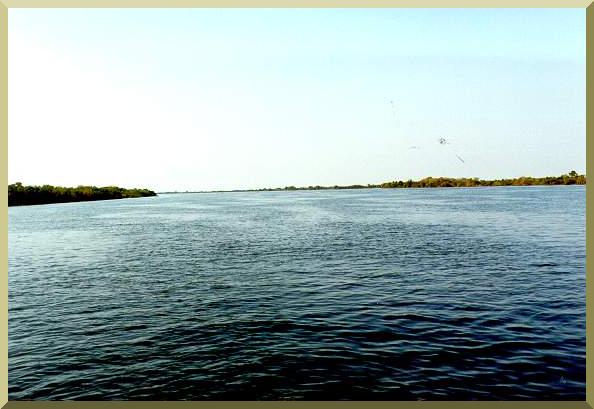|
There are three types of errors in mathematical modeling: The first two types
are widely recognized, while the third type is often overlooked.
Data of questionable quality may be due to inappropiate procedures, recording errors,
equipment defects, and/or nonstationary of the data.
Thus, mathematical models must may necessarily seek
to match the field data in every case.
In 1995, I completed a study entitled "Hydrologic and environmental impact of the Parana-Paraguay waterway on the Pantanal of Mato
Grosso, Brazil."
Earlier, I had traveled to Rio de Janeiro, Brazil, and met with
Newton Carvalho,
who had spent several years doing field measurements in the Upper Paraguay river. Together we visited the appropriate agency
in search of the field data to use in the study. There was plenty of gage data, which we collected dutifully.
In addition, we found a limited amount of hitherto unpublished sediment
data, consisting of monthly sediment concentration at two gaging stations,
Cáceres and Porto Esperança,
for a five-year period
(1977-82). Newton himself had participated in the sediment measurements. I thought it important to publish the sediment data,
not only to complement the hydrologic impact study, but also for purely historical reasons.
The study report was published in August 1995.1 Several months later, I got a call from Steve Hamilton,
from Michigan State University, who had spent several years
working on the Upper Paraguay river.
He mentioned to me that in his experience, there was something wrong with the published sediment measurements. Some of the concentration values,
particularly the November 1977 data points,
appeared to be too high. Immediately
after hanging up the phone, I called Newton for clarification.
I asked him: "Newton, can you think of anything wrong with the 1977-82 sediment data for the Upper Paraguay?"
He paused for a moment and said: "As a matter of fact, now that you mention it,
we had some sample leakage during transport, which may have caused some of the concentration values to be too high."
Thus, the moral of the story is:
"Publication of data does not imply correctness in all cases."
| ||
|
|
